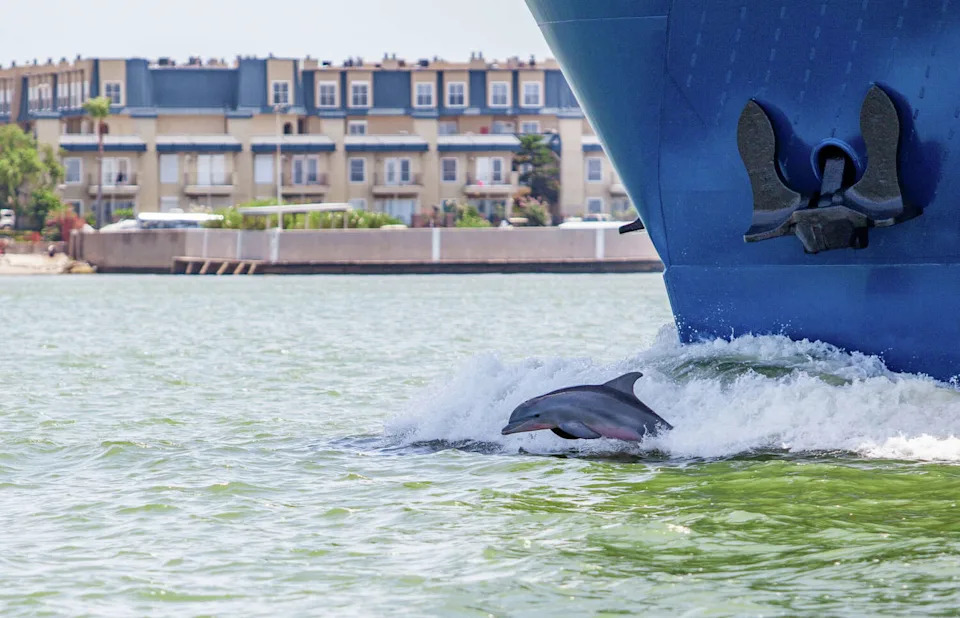You’re standing on the deck of a ferry off the coast of Galveston when a sleek gray fin slices through the water. A dolphin surfaces, riding the wake, close enough to hear your voice. Instinctively, you call out-maybe just a sound of awe.
What you’ve just done is illegal.
In Texas, where dolphins are regularly spotted near shorelines, piers, and tour boats-especially around Galveston and Surfside Beach-it’s against the law to try to interact with them in any way. That includes feeding, swimming alongside, touching, or even attempting to get their attention. Under the federal Marine Mammal Protection Act (MMPA), it’s classified as harassment, a violation that can bring fines of up to $100,000 and even jail time.
Yes, even talking to them counts.
The idea might sound so bizarre, it could be a stand-up bit-and it is. Comedian Maddi Mays recently joked about it onstage:
“I started thinking, ‘What do dolphins know that’s so illegal?'” she said. “And I was like, wait-the dolphins know exactly who was at Epstein’s island. Because what island doesn’t have swimming with dolphins as an excursion?”
But the law is no punchline. Its purpose is to protect dolphins from the very human urge to connect. According to the National Oceanic and Atmospheric Administration (NOAA), even well-meaning interactions can cause long-term harm. Dolphins that grow used to people stop hunting, start begging, and become dangerously bold.
“Dolphins are hunters, not beggars,” NOAA says. “But when people offer them food, dolphins (like most animals) take the easy way out.”
They learn to expect handouts, lose their natural fear of boats, and approach moving propellers or fishing lines. Some ingest bait or human food that can make them sick-or kill them.
When adult dolphins become accustomed to people for food, their young may not learn natural foraging behaviors.

A bottlenose dolphin leaps through the bow wave of a large ship in the Galveston Harbor. (Scott Flathouse/Getty Images)
And it’s not just dolphins who get hurt. NOAA has documented numerous cases of injuries to people, from bites to full-on underwater attacks. In one instance, a woman fed two dolphins and then jumped in to swim with them. One latched onto her leg. “I literally ripped my left leg out of its mouth,” she said after spending a week in the hospital.
Some dolphins, emboldened by repeated encounters, become aggressive when they don’t get what they expect. They may approach boats or swimmers uninvited, and there’s no guarantee the interaction will be friendly.
Even if a dolphin comes straight toward you, the safest and legal response is to avoid engaging. NOAA advises keeping at least 150 feet away at all times.
In Texas, watching dolphins from the shore or a boat can be a magical experience-but it only stays that way if you admire them from a distance, in silence.
More Parks & Wildlife
Habitat | Houston Zoo pulls penguins from exhibit after safety scare
Watch out | Taking these items from Texas beaches could get you arrested
Conservation | How Bad Bunny accidentally became a ‘game-changer’ for Texas zoo
Hiking | New 100-mile trail could be Texas’ next big tourist magnet
For the latest and best from Chron, sign up for our daily newsletter here.
This article originally published at Is it illegal to talk to dolphins in Texas? The answer might surprise you..

